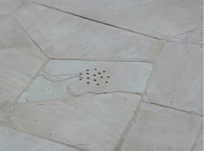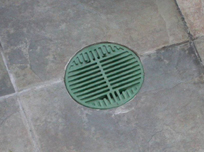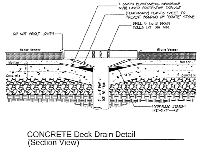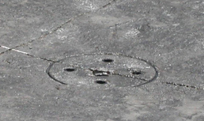The Art of Concealment

 For years now, I have been fascinated by the lengths people are willing to go to avoid visual clutter.
For years now, I have been fascinated by the lengths people are willing to go to avoid visual clutter.
It all started before I was a watershaper – back in the days when a partner and I spent our time setting up high-tech security systems in the homes of well-to-do residents of Silicon Valley.
As though it were yesterday, I remember a homeowner giving me a tour of her house and taking delight in asking me to turn on the lights as we entered a room: I looked around for the usual switches and saw none, nor were there any lamps with conventional knobs. She definitely had caught my attention.
Walking over to the wall near the door, she gently tapped a section of the baseboard with her foot, and on came the lights.
Opening a Door
I remember this incident so clearly today because it literally changed the way I look at the smallest details of the environments in which I find myself. When I visit clients, when I travel, wherever I go, I look at what people are willing and happy to do to rid their surroundings of the jangling sort of noise you perceive with your eyes.
More important, I apply the spirit of what I learn from these observations to my work with watershapes, focusing to the best of my ability on making visual clutter vanish from view.
There are now enough of these concealing details in my portfolio that I’ve prepared a series of articles on them for this newsletter. To start, let’s begin with system components that are present around just about every pool, spa or fountain that’s ever been installed – that is, deck drains.
 In a typical project, the installer will put drains at the usual intervals all around a project’s finished deck surfaces. When the time comes (and usually taking cues from the budget), he or she will head off to the supply house and pick up the required number of plastic, stainless steel or brass drain covers (Figure 1).
In a typical project, the installer will put drains at the usual intervals all around a project’s finished deck surfaces. When the time comes (and usually taking cues from the budget), he or she will head off to the supply house and pick up the required number of plastic, stainless steel or brass drain covers (Figure 1).
The result is a deck surface full of peaks and valleys (that’s the reason I prefer slot drains, which I’ll get to in a future article) in which the drain covers are visual buzzers – impossible to ignore and eternally annoying. I’m inclined to say that this is evidence of the installer’s aesthetic laziness in general – and specifically of his or her lack of appreciation of the art of concealment!
Sweet Relief
I use a different approach, one based largely on drain covers I’ve seen in my travels on Europe’s stone-paved  streets and plazas. Using the construction detail shown in Figure 2, I use pieces of stone or concrete to cover drain heads and make them blend into the field of material that surrounds them
streets and plazas. Using the construction detail shown in Figure 2, I use pieces of stone or concrete to cover drain heads and make them blend into the field of material that surrounds them  (Figure 3).
(Figure 3).
To be sure, doing things this way is more complicated than the conventional approach. For example, the cover pieces need to be removable so the drains can periodically be cleared, which takes some doing in setting the cover and keeping it from rocking when anyone steps on it. It costs my clients a bit more to achieve this look, but to my way of seeing things, it’s a small price to pay to have this necessary function performed without calling undue attention to it.
As I see it, it’s also a fundamental gesture to the art of concealment – one that makes my clients very happy.
Next: Burying a cool treasure.
Paolo Benedetti is principal at Aquatic Technology Pool & Spa, a design/build firm based in Morgan Hill, Calif. He may be reached at [email protected].









